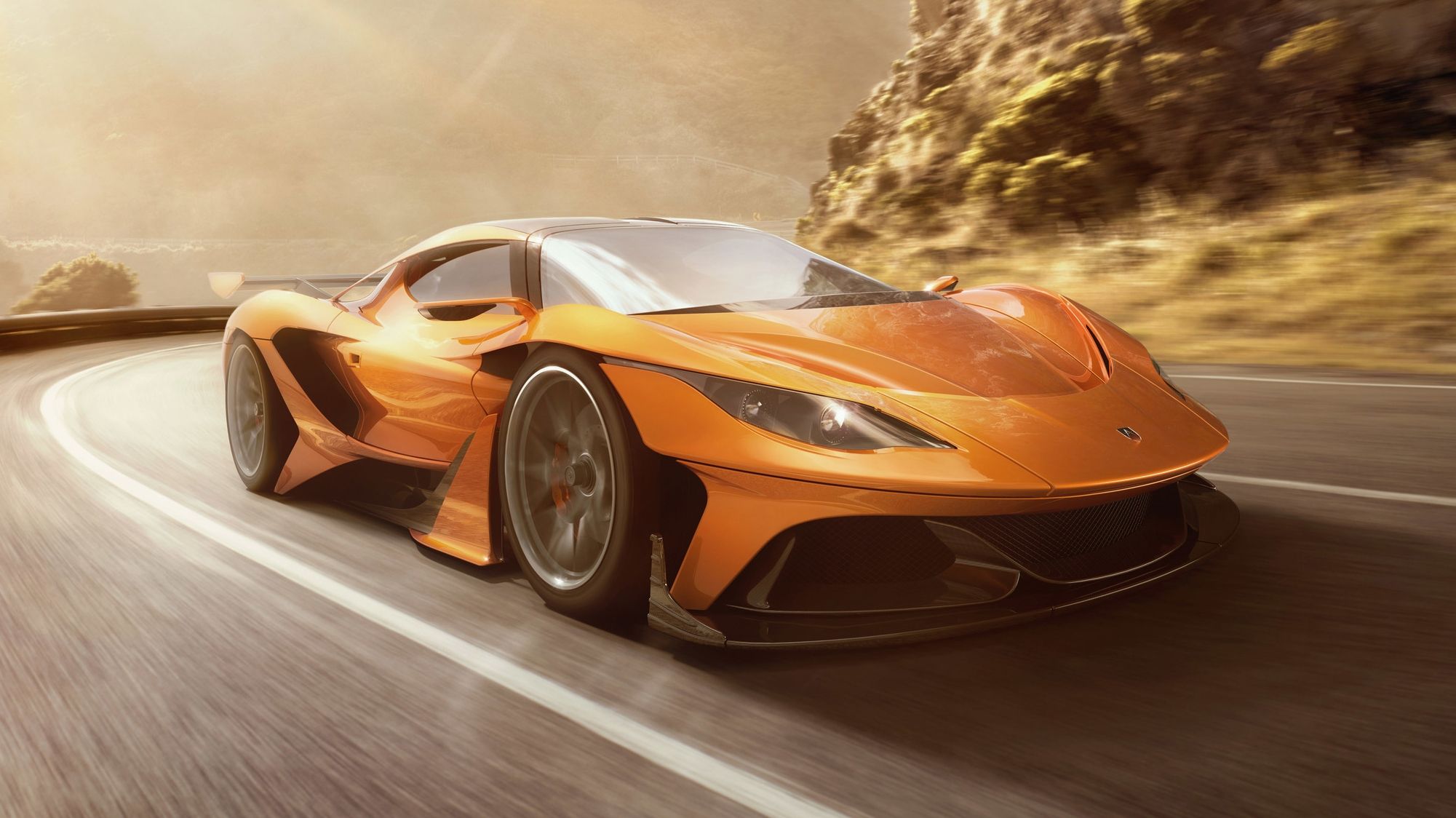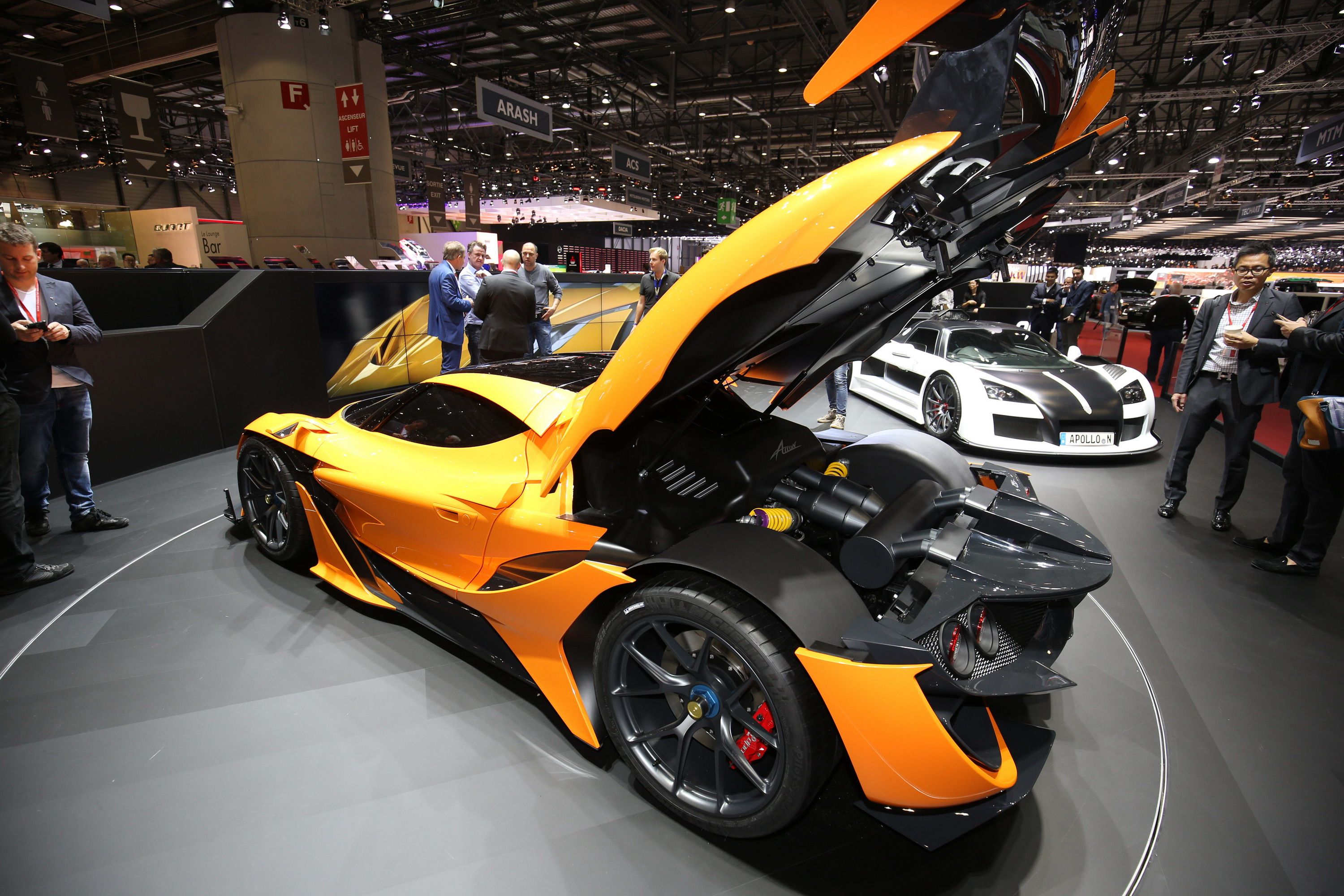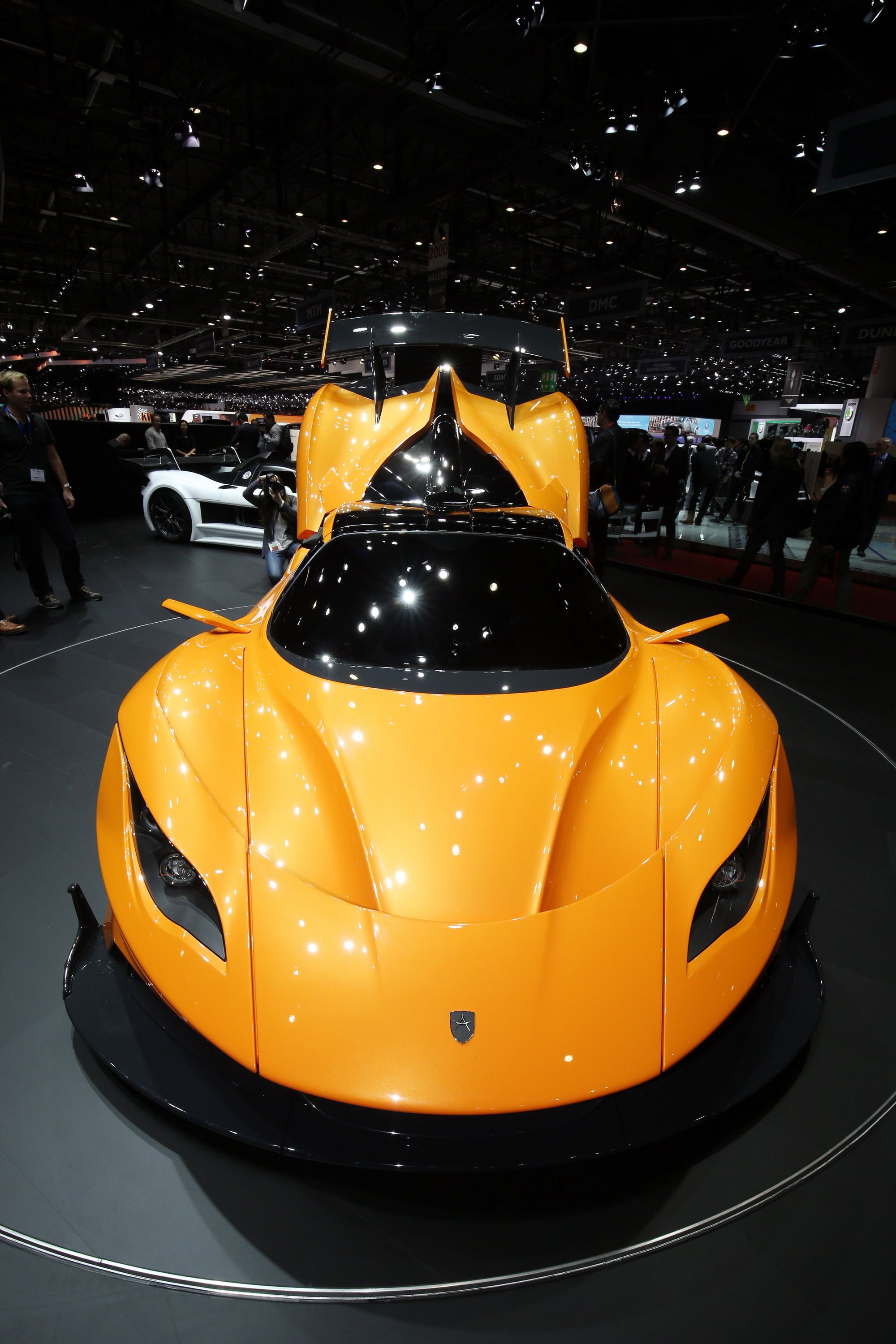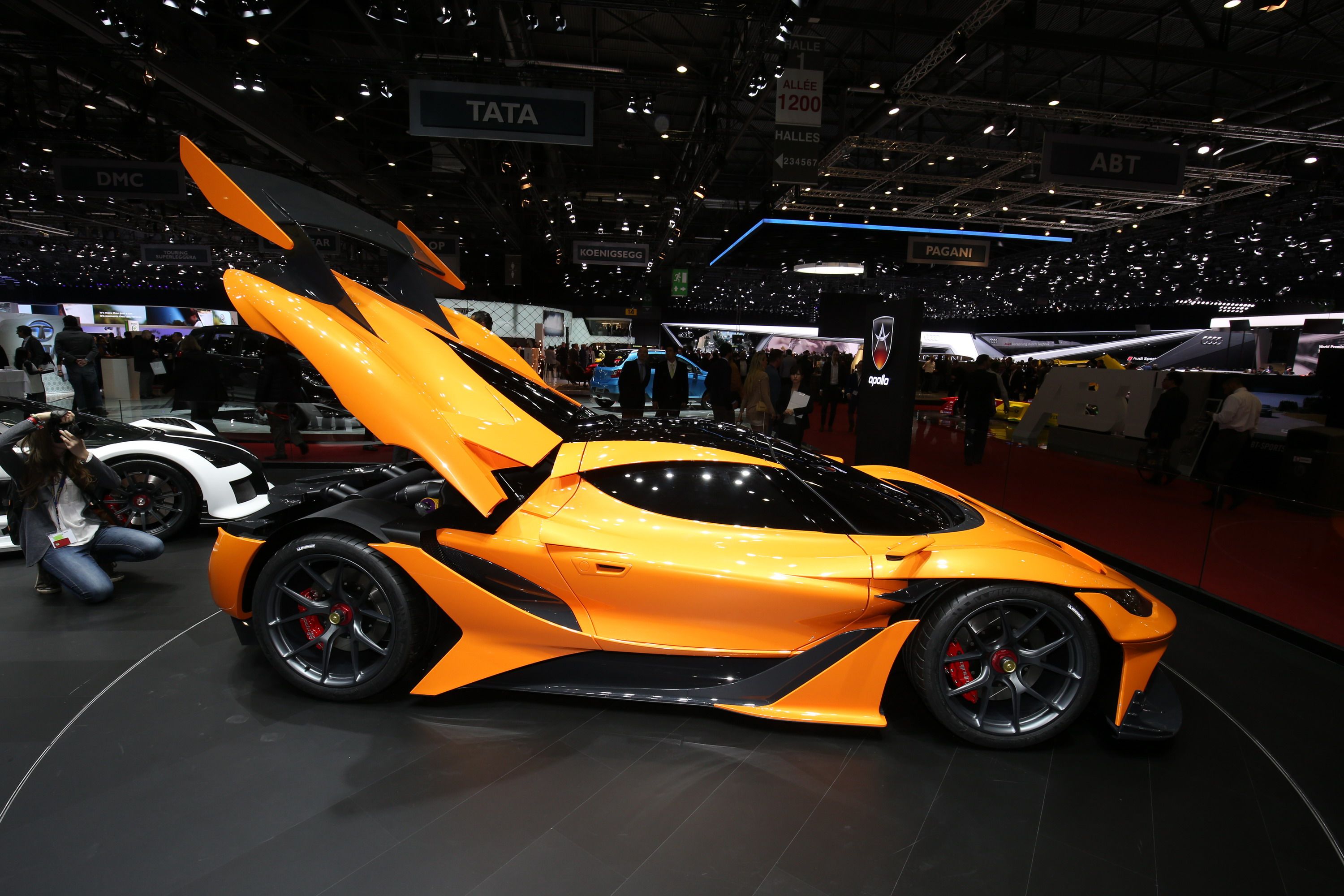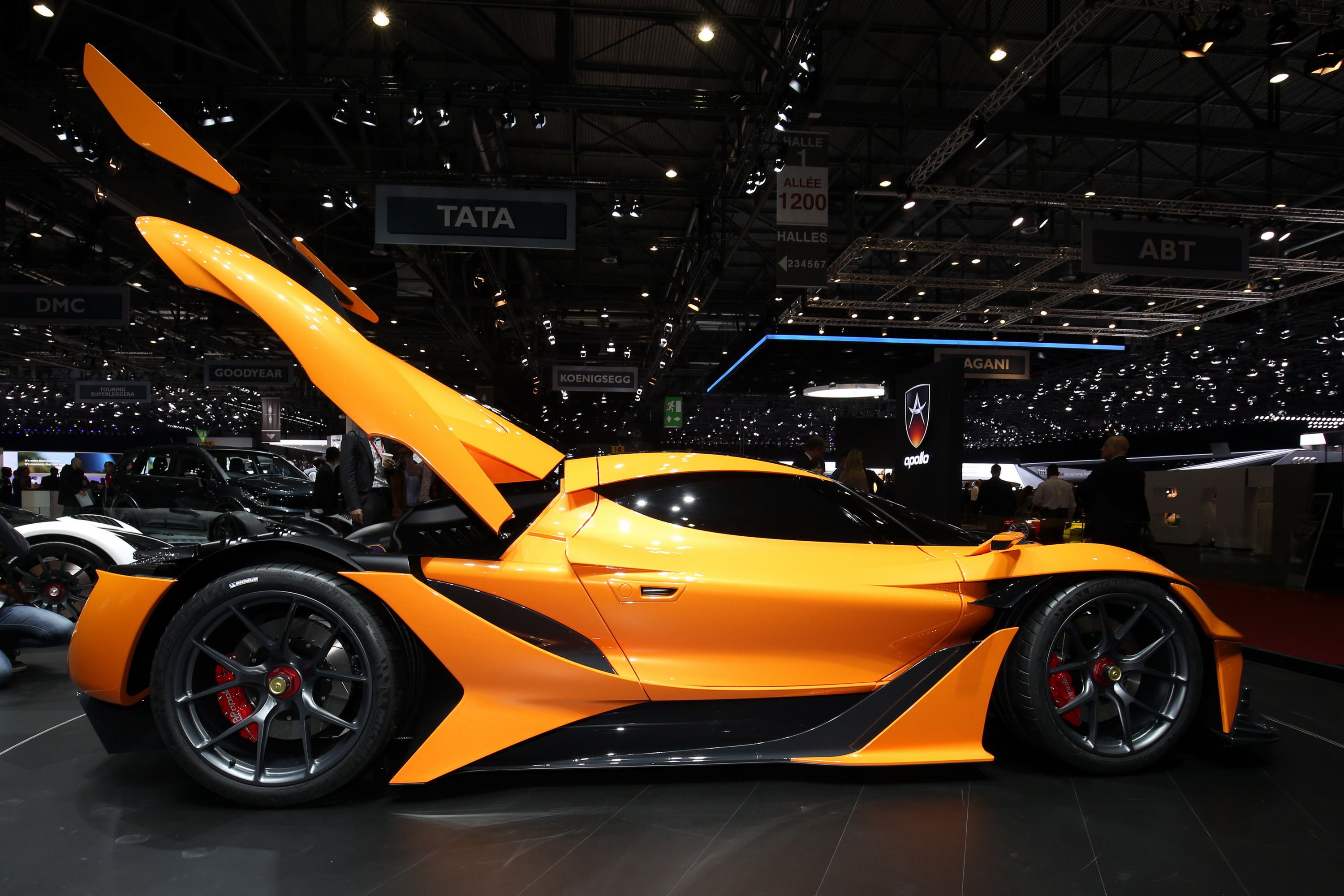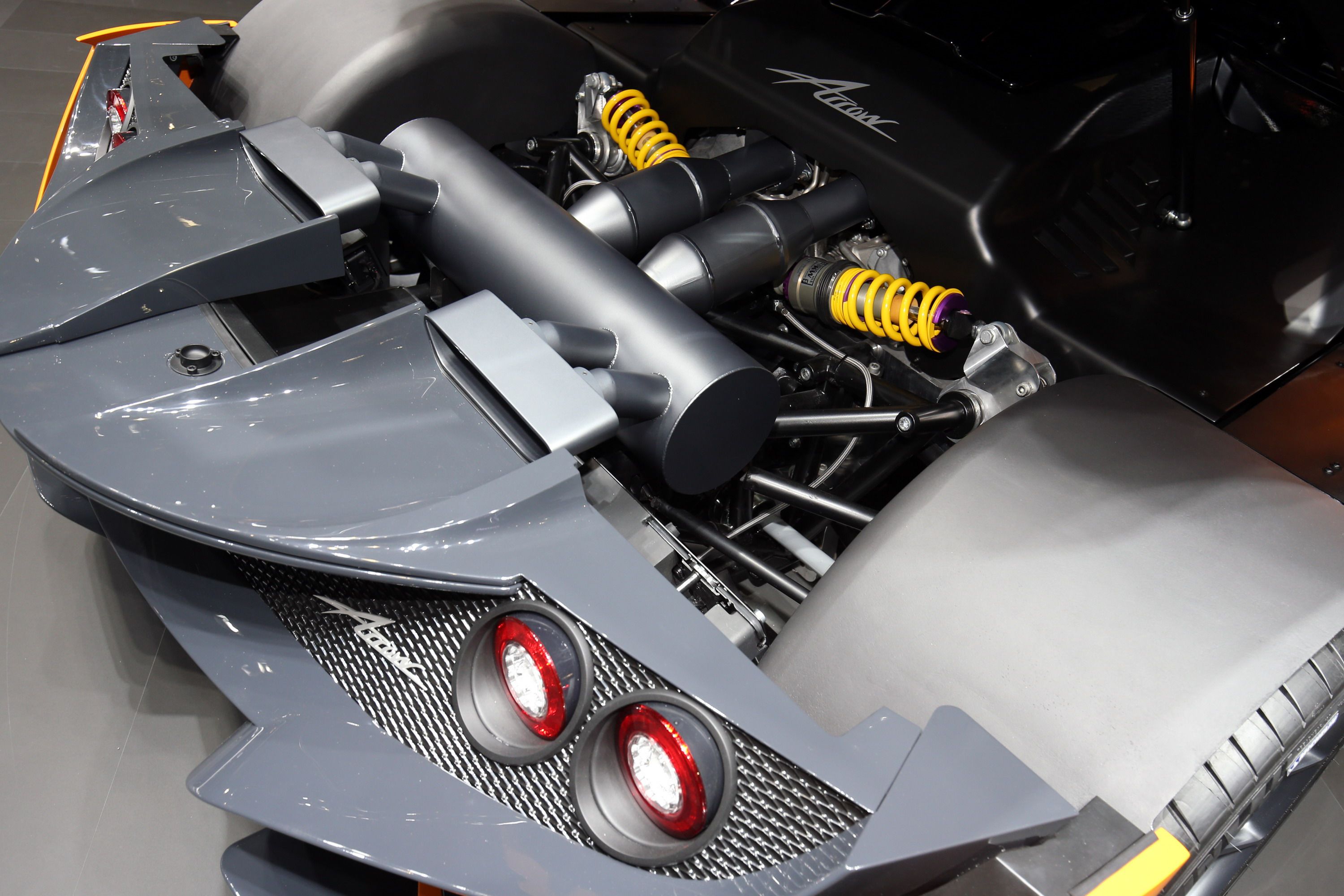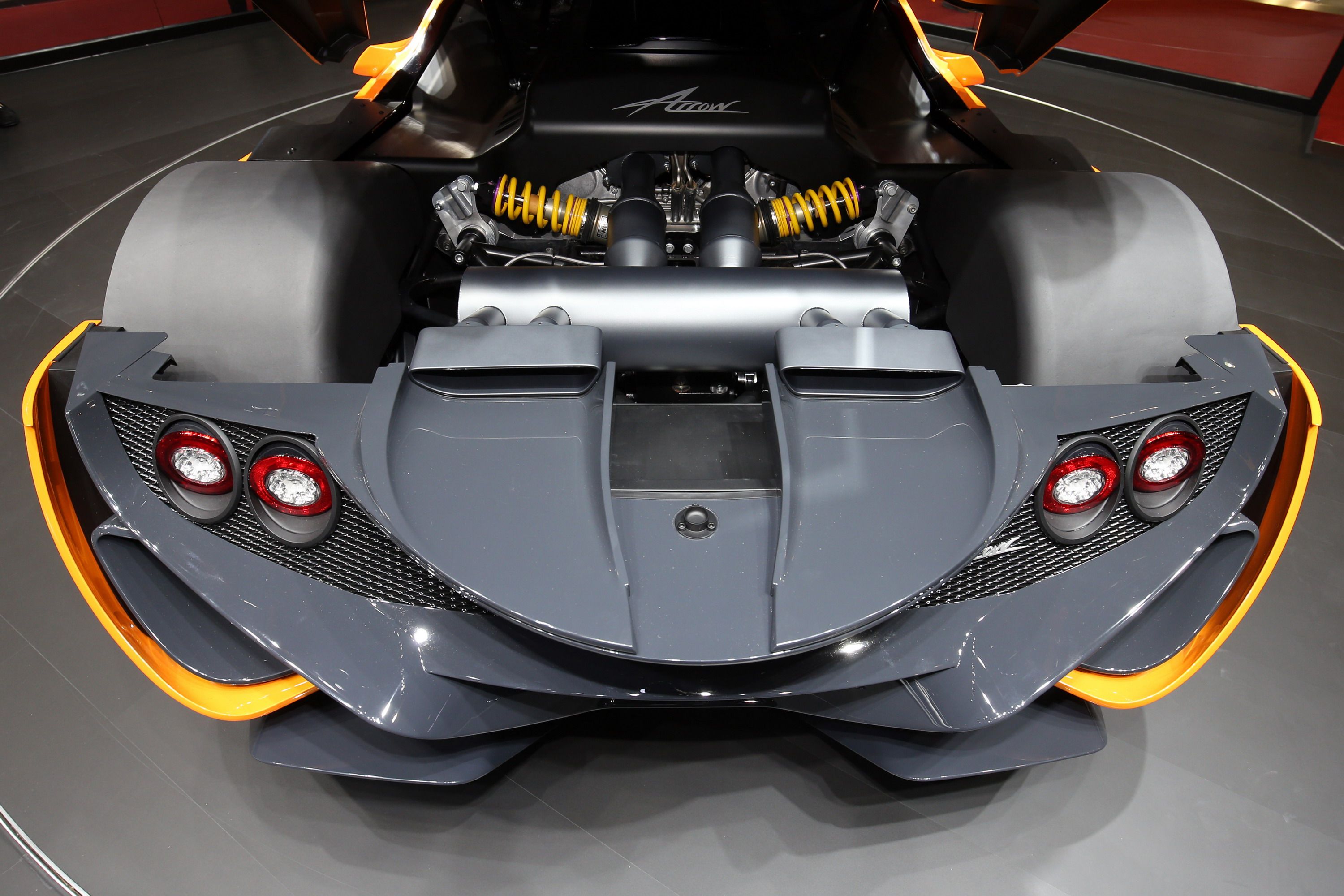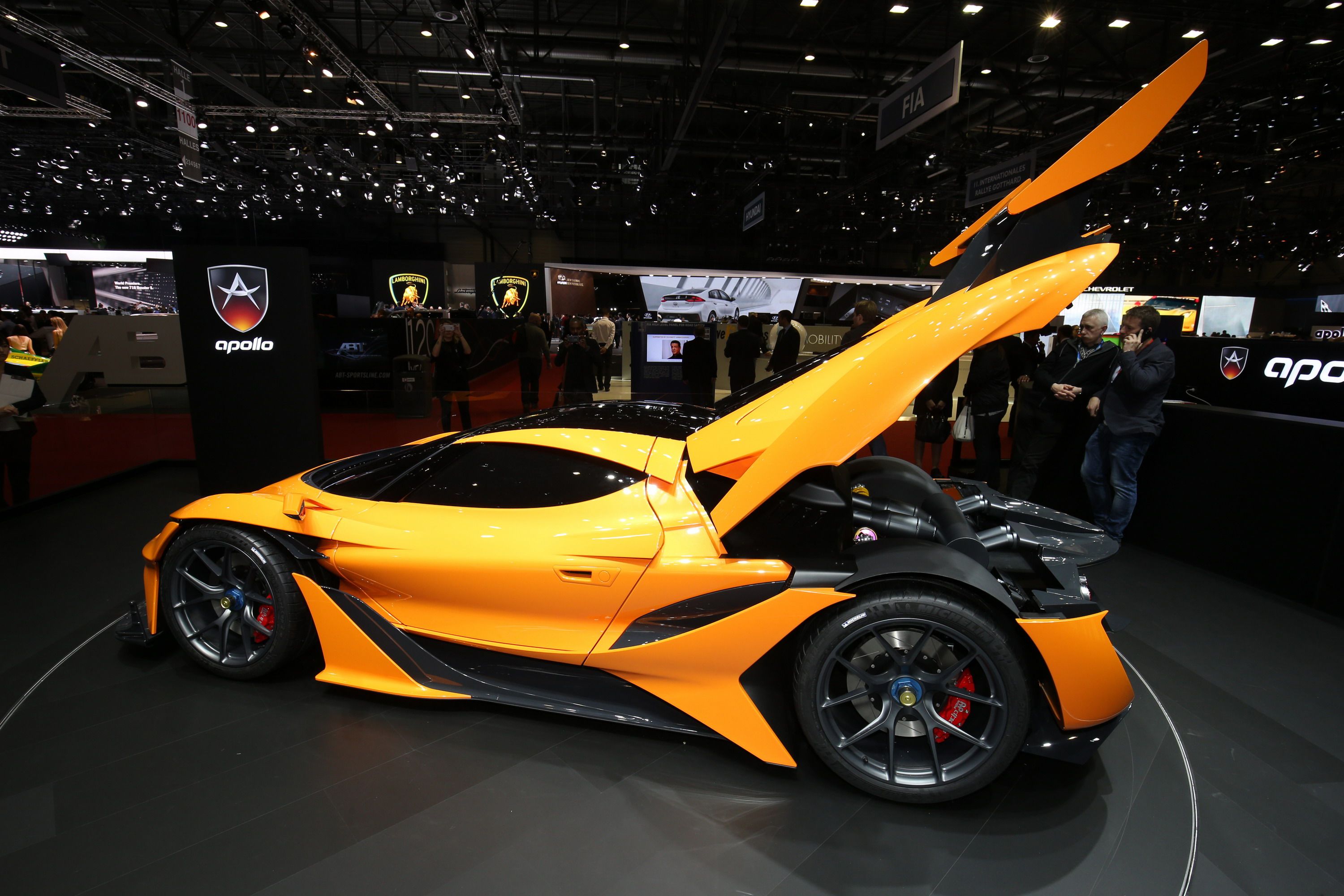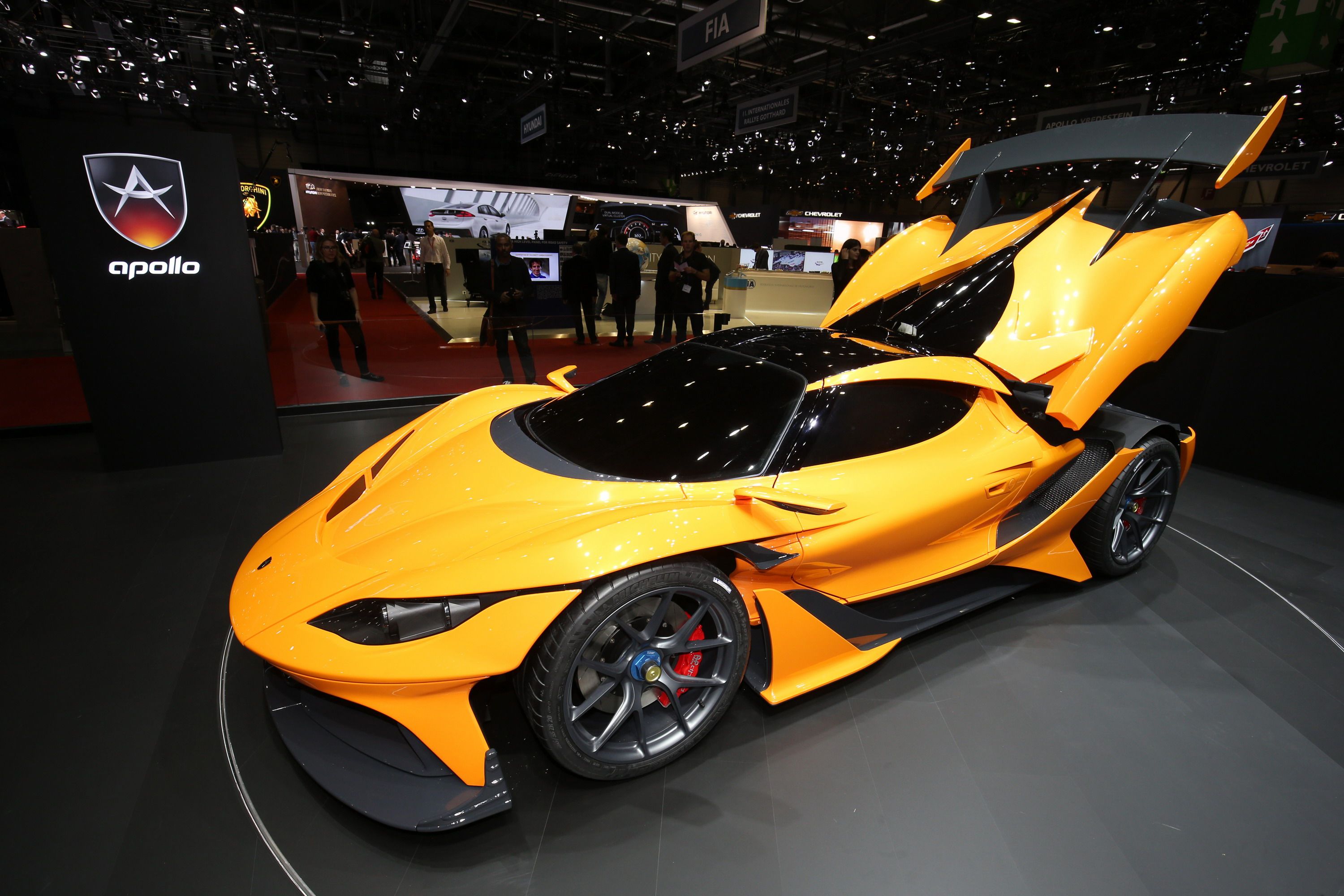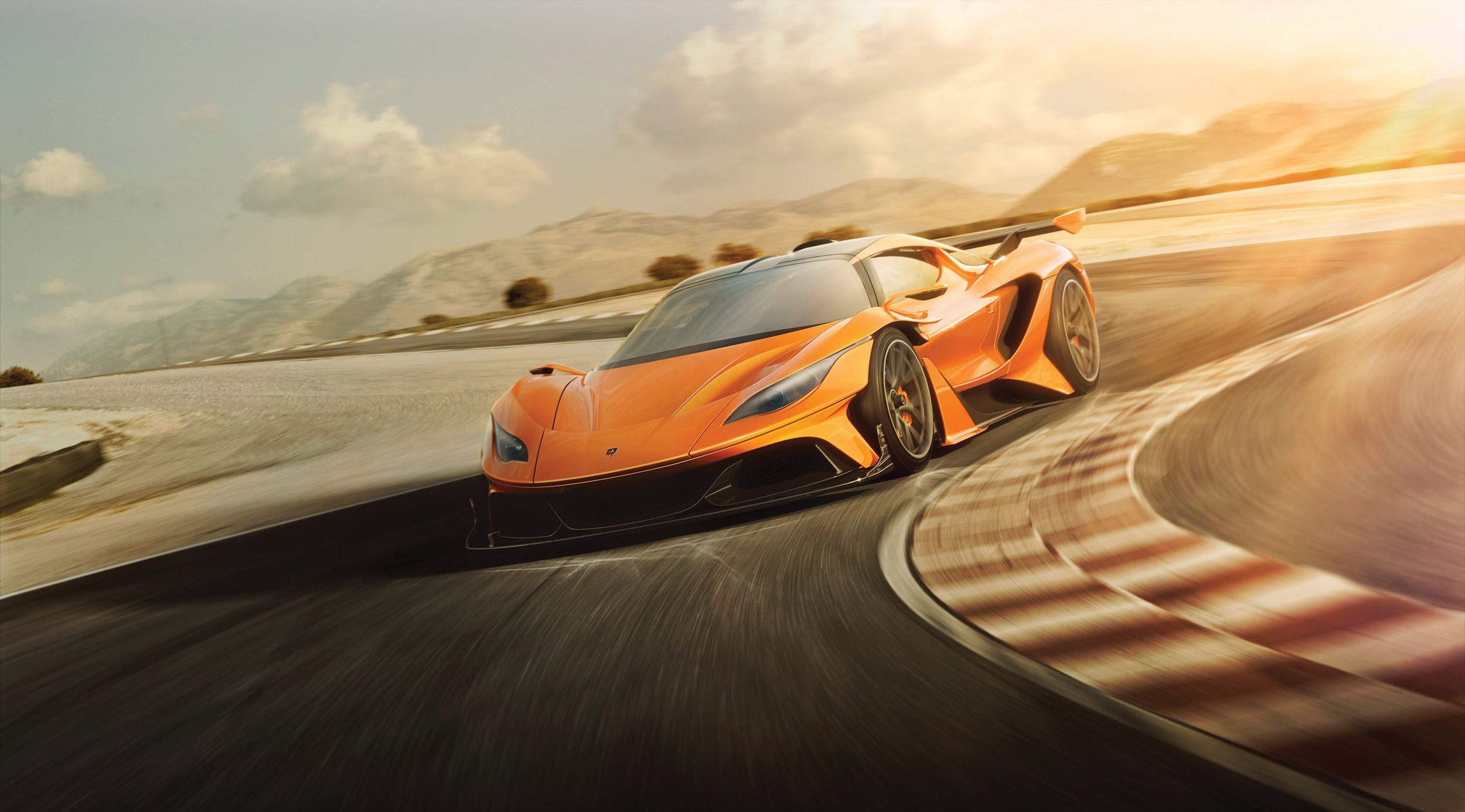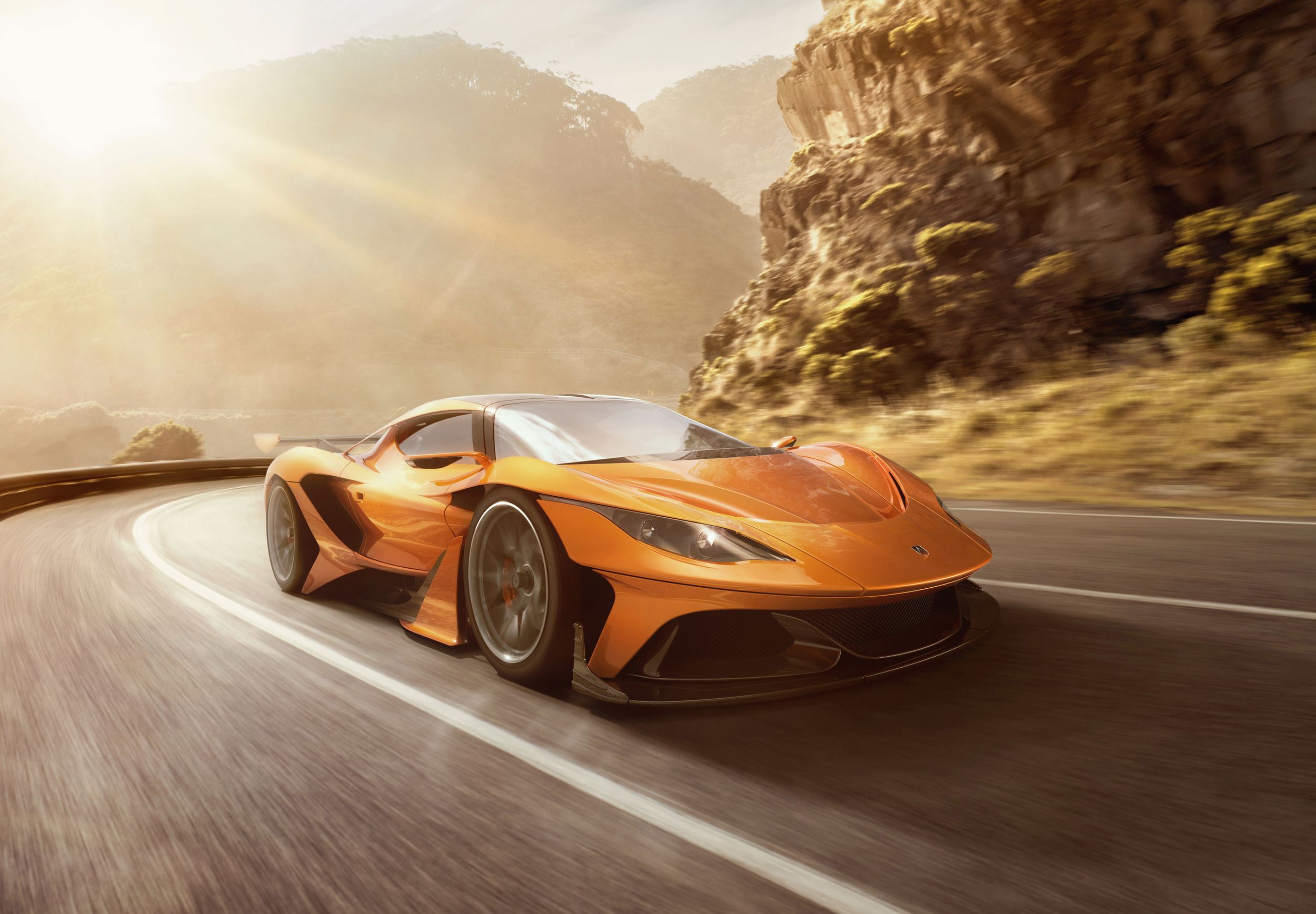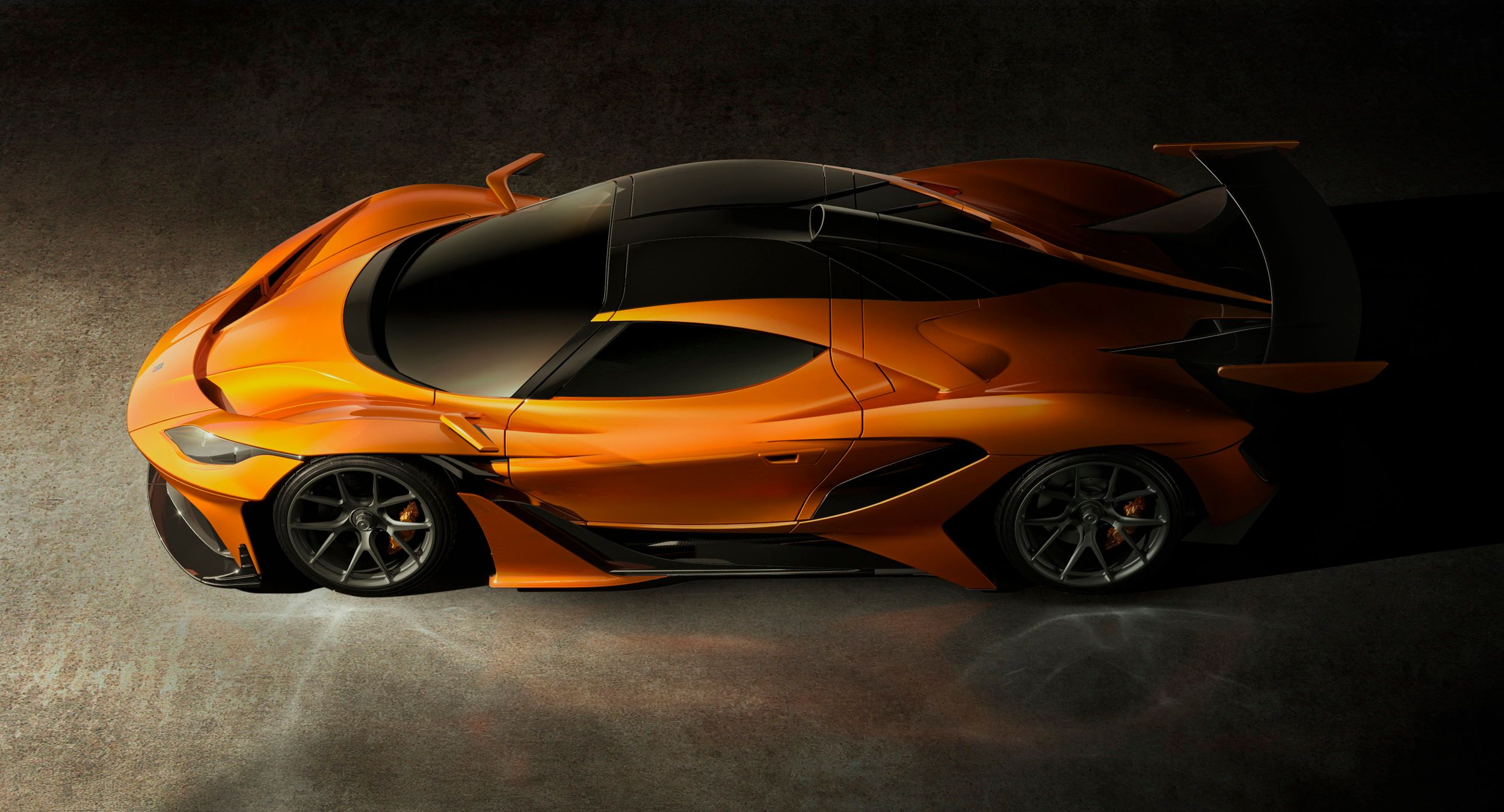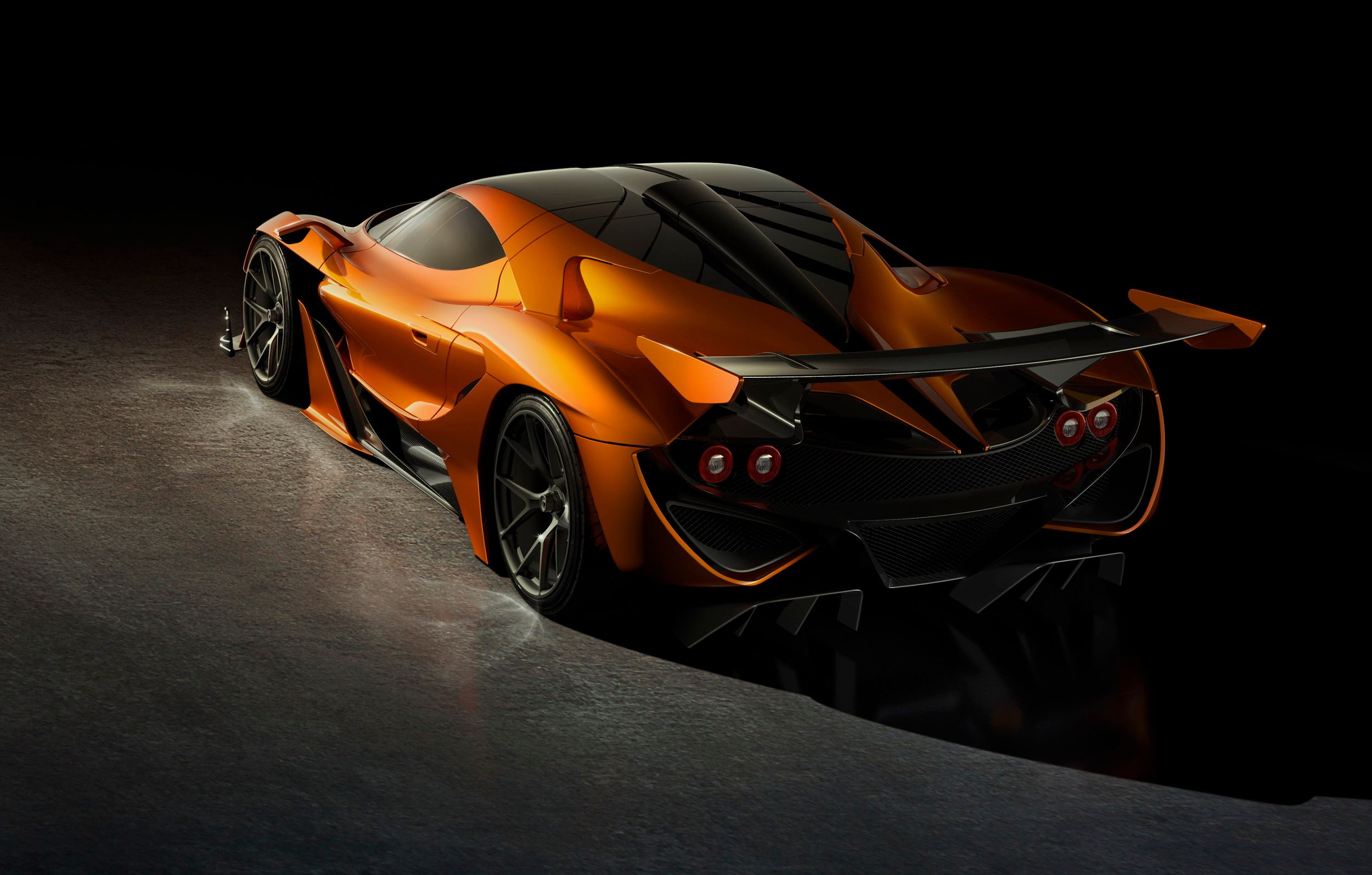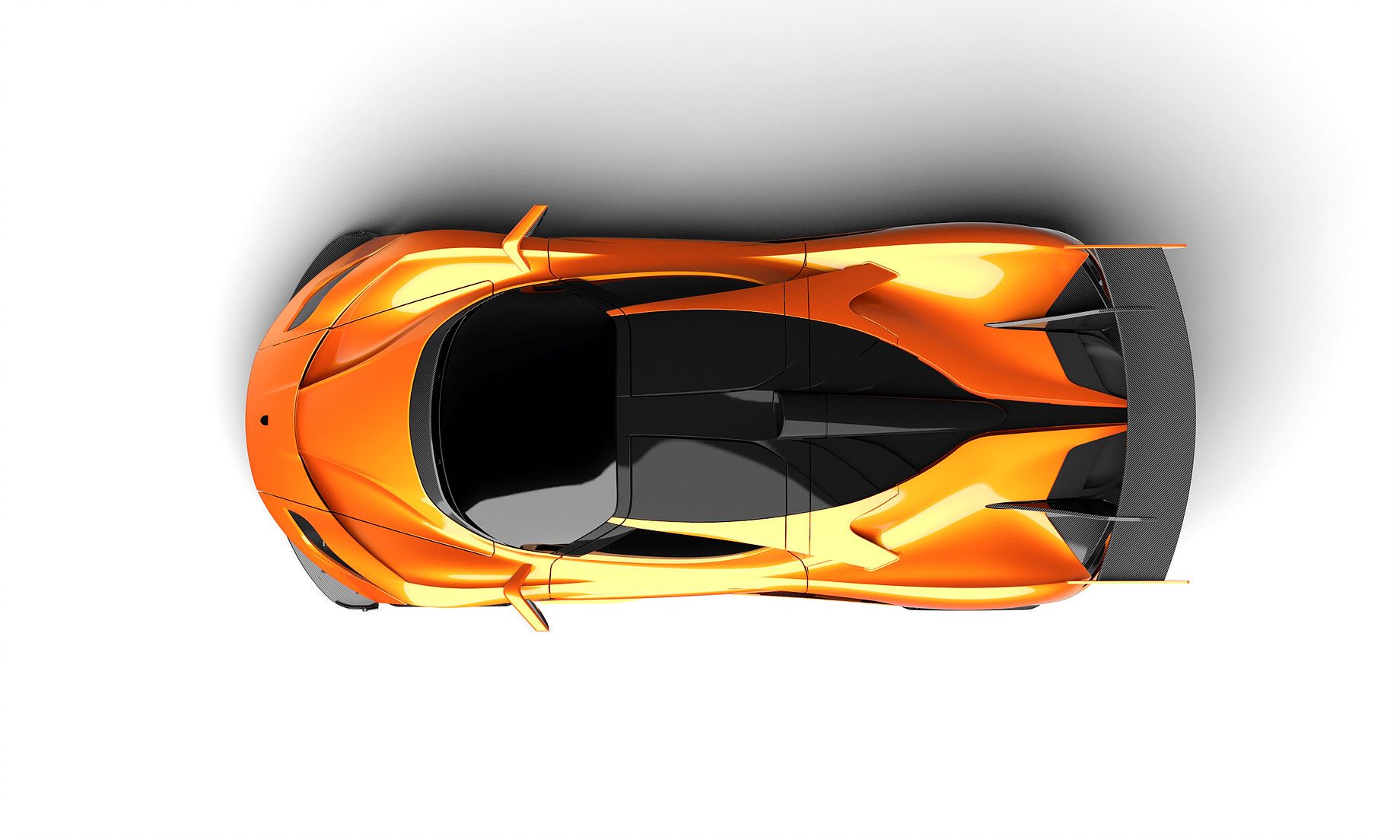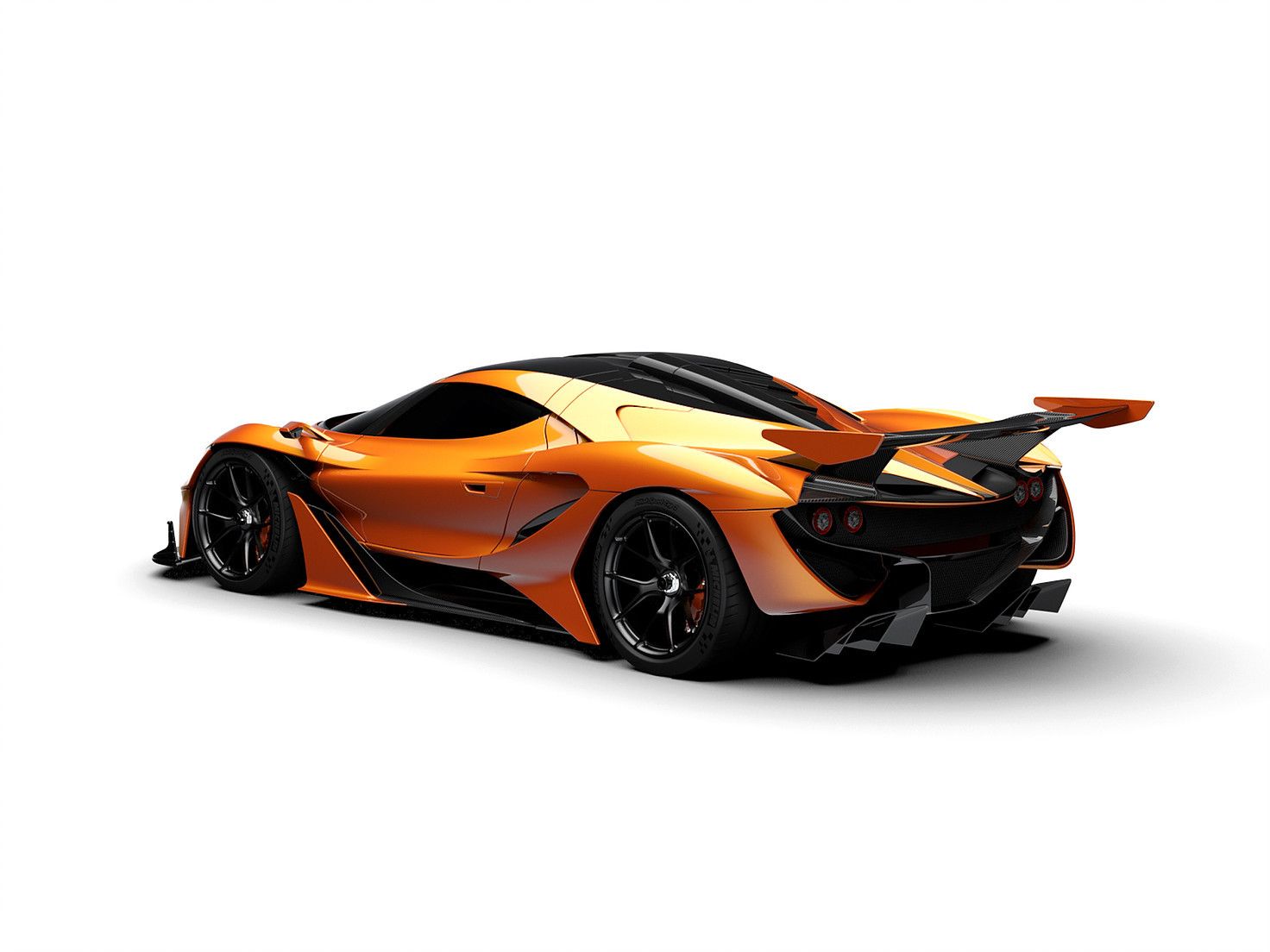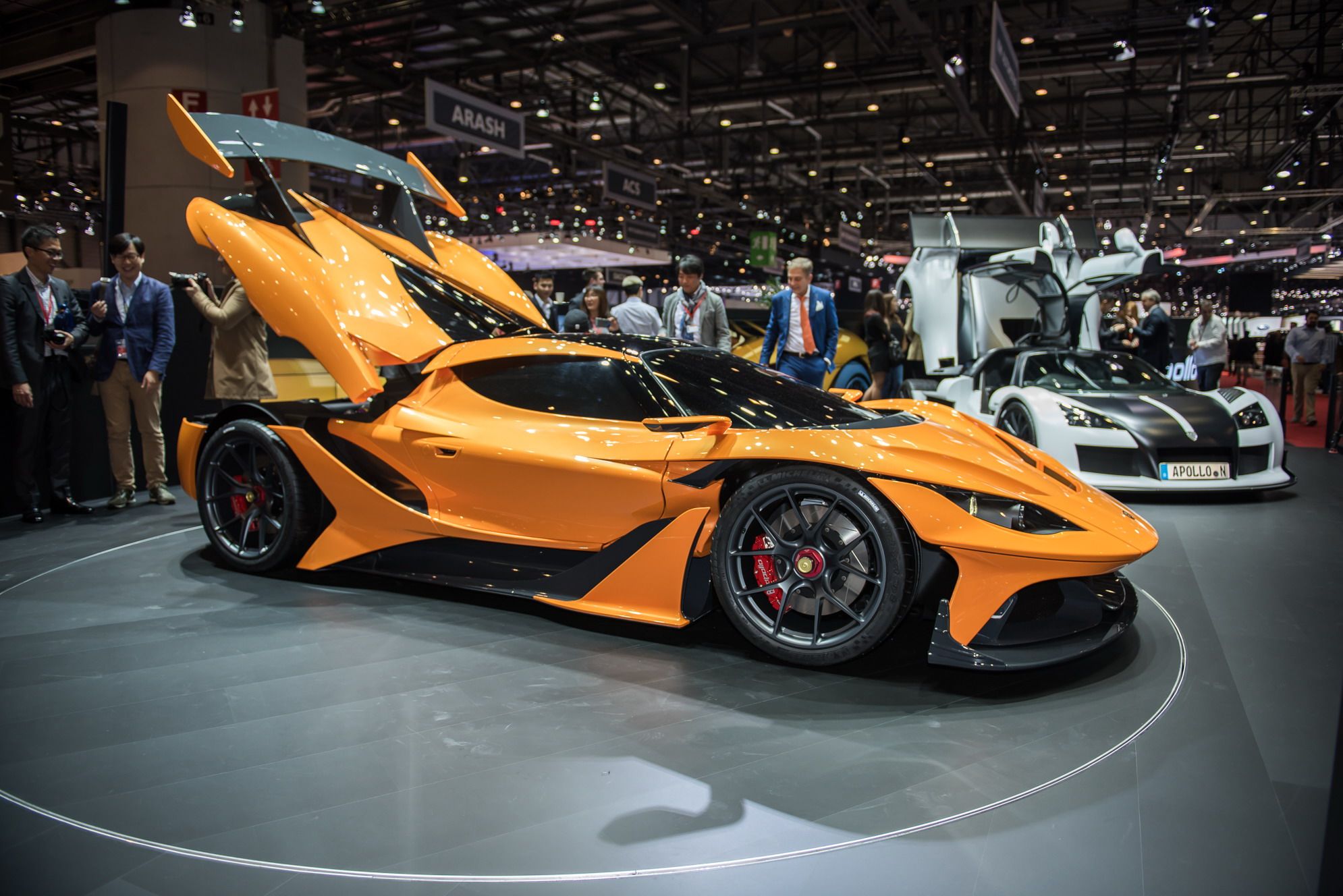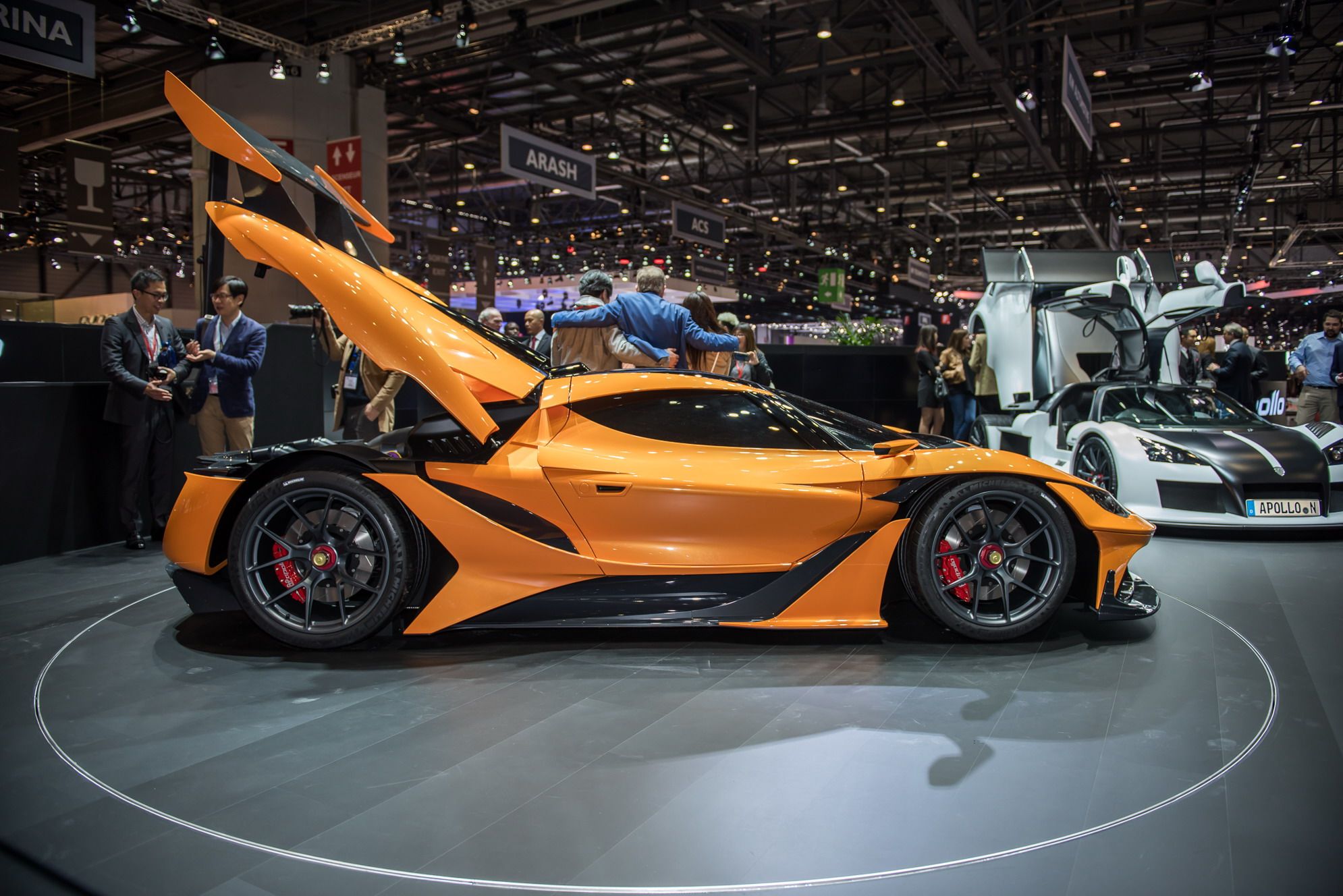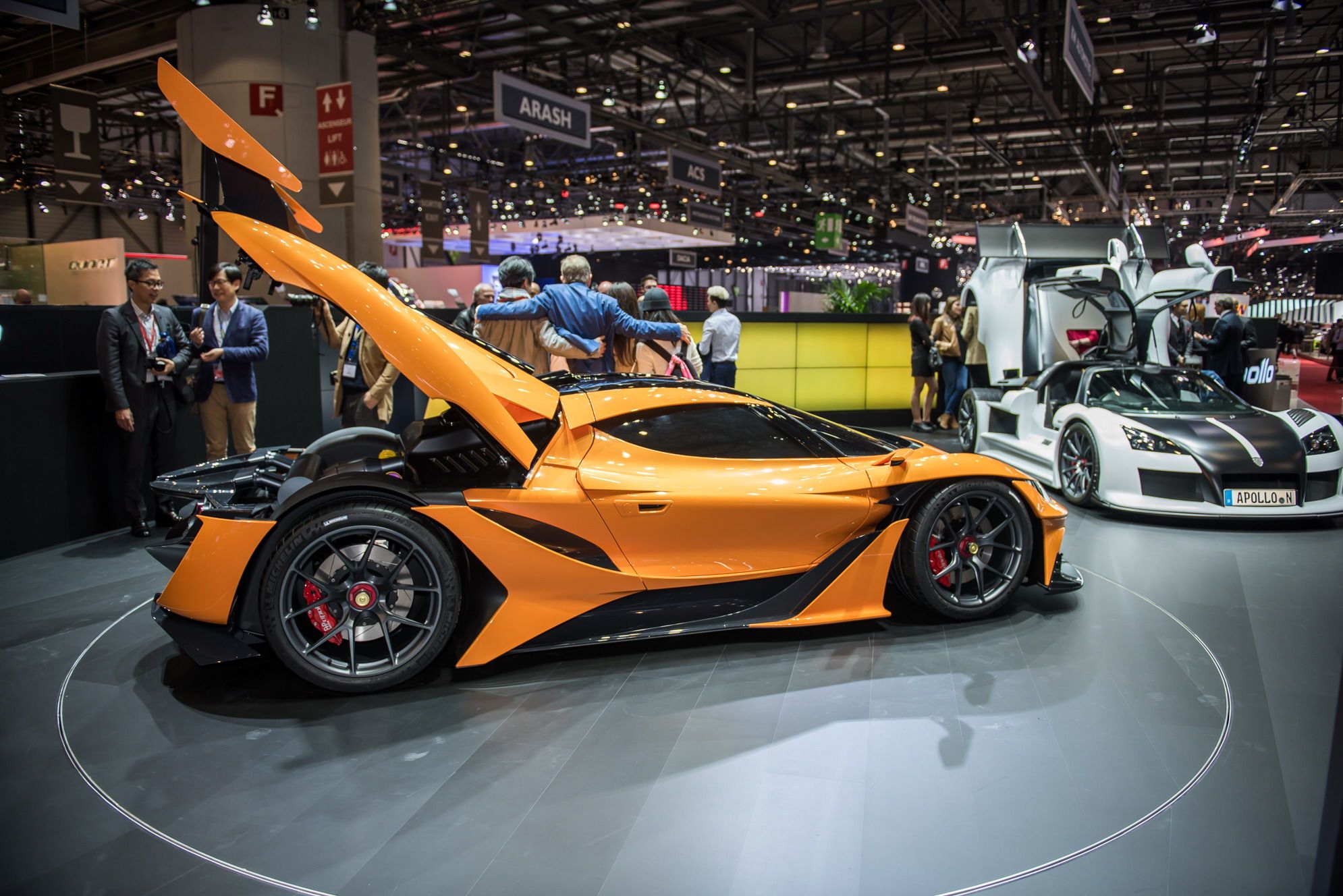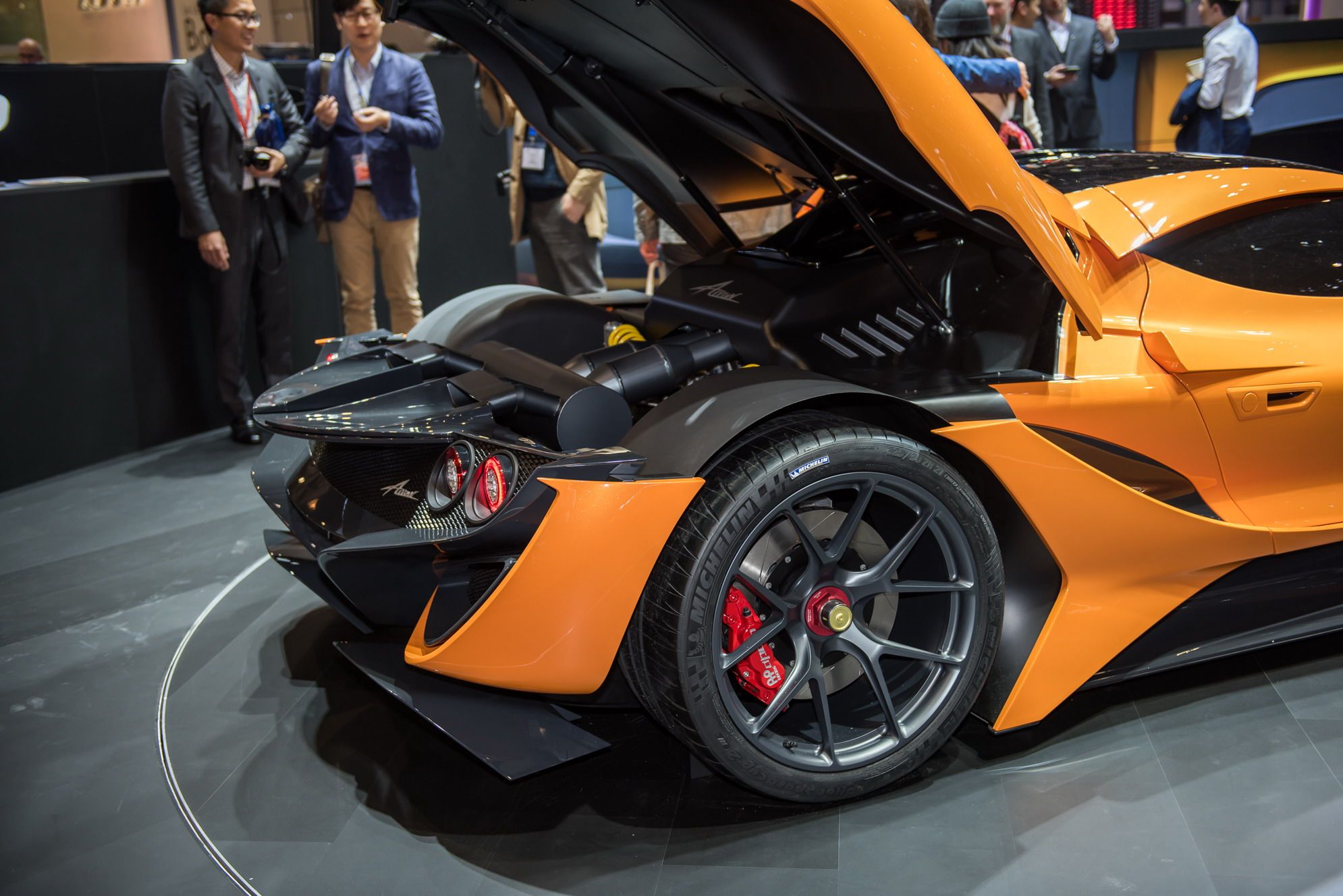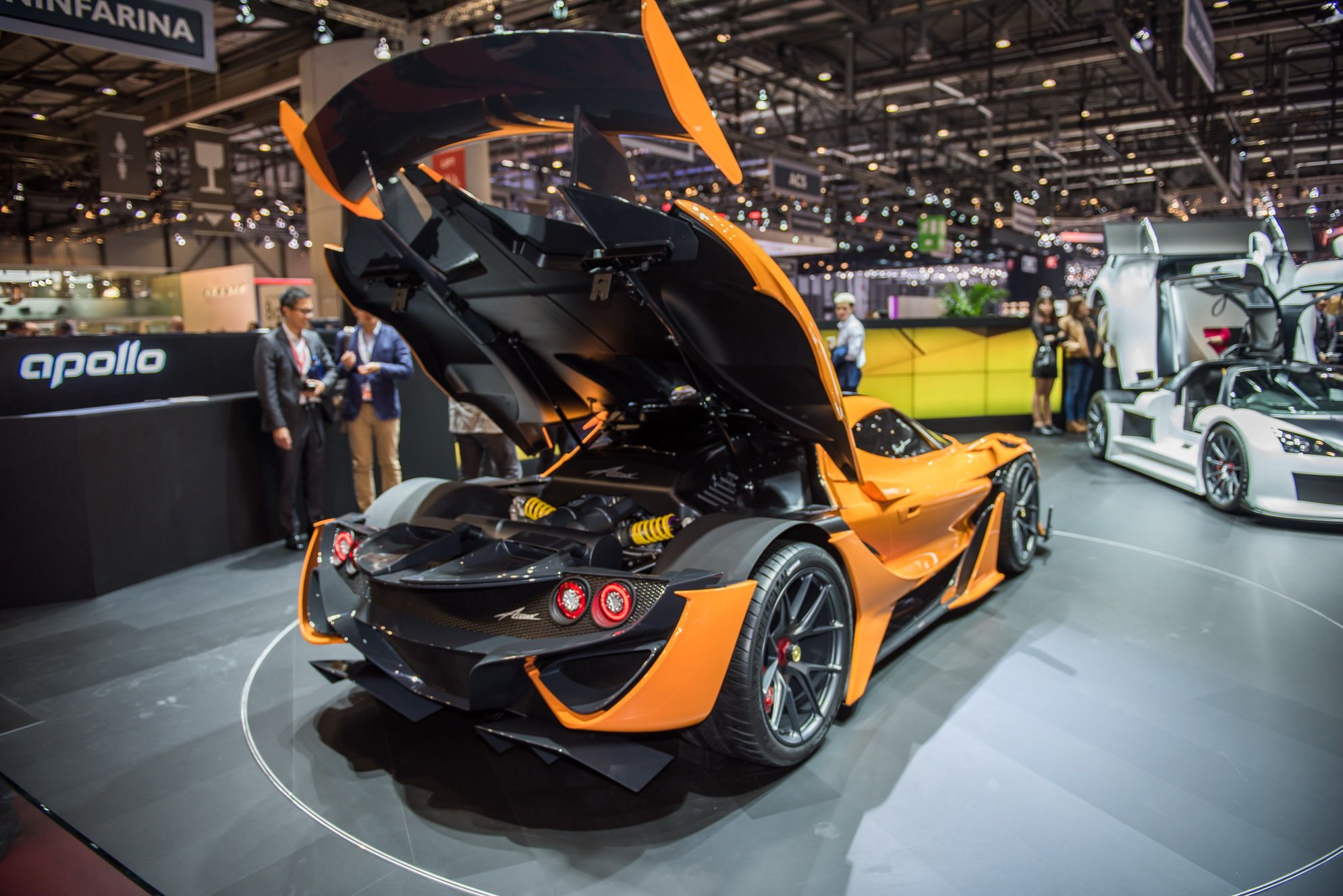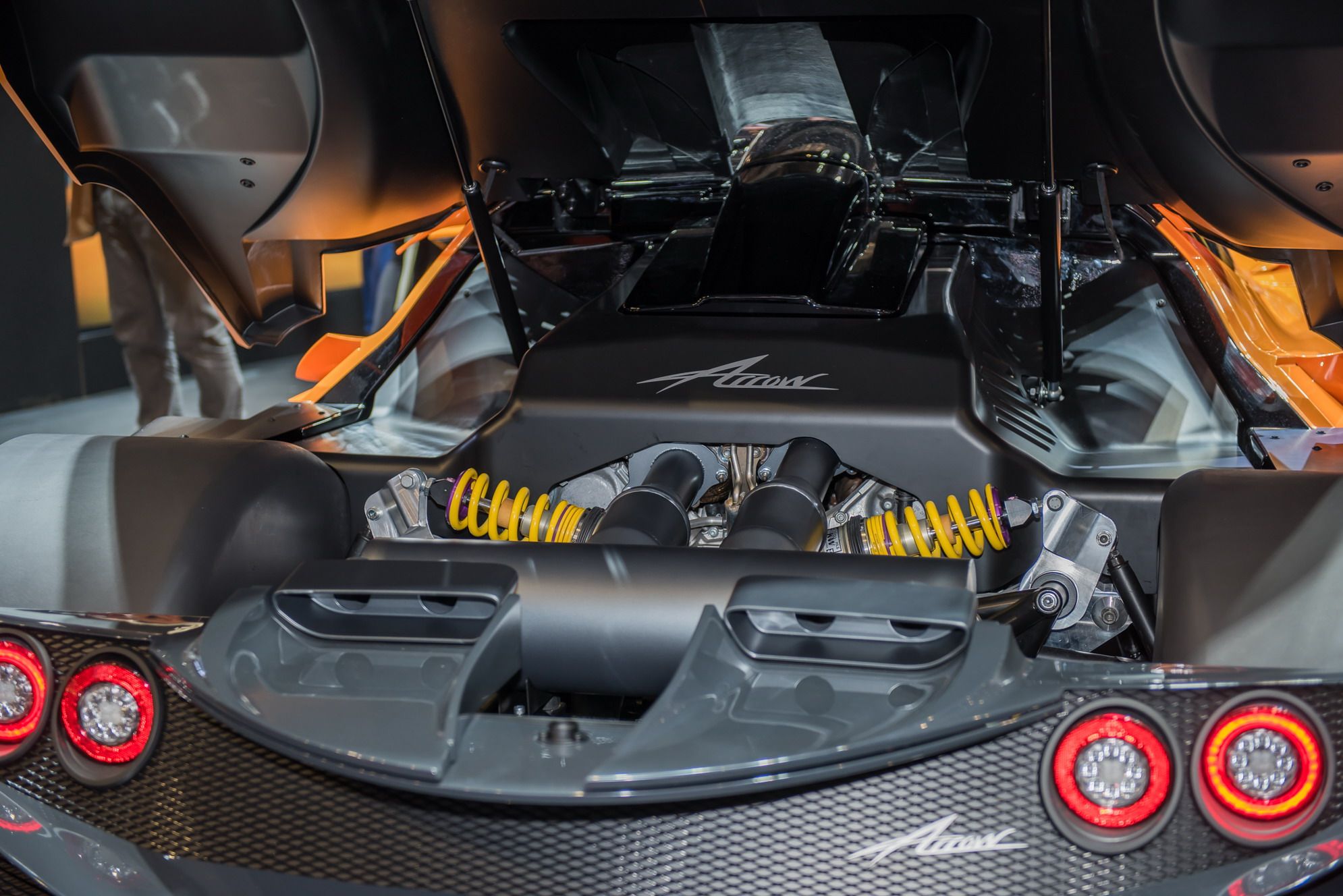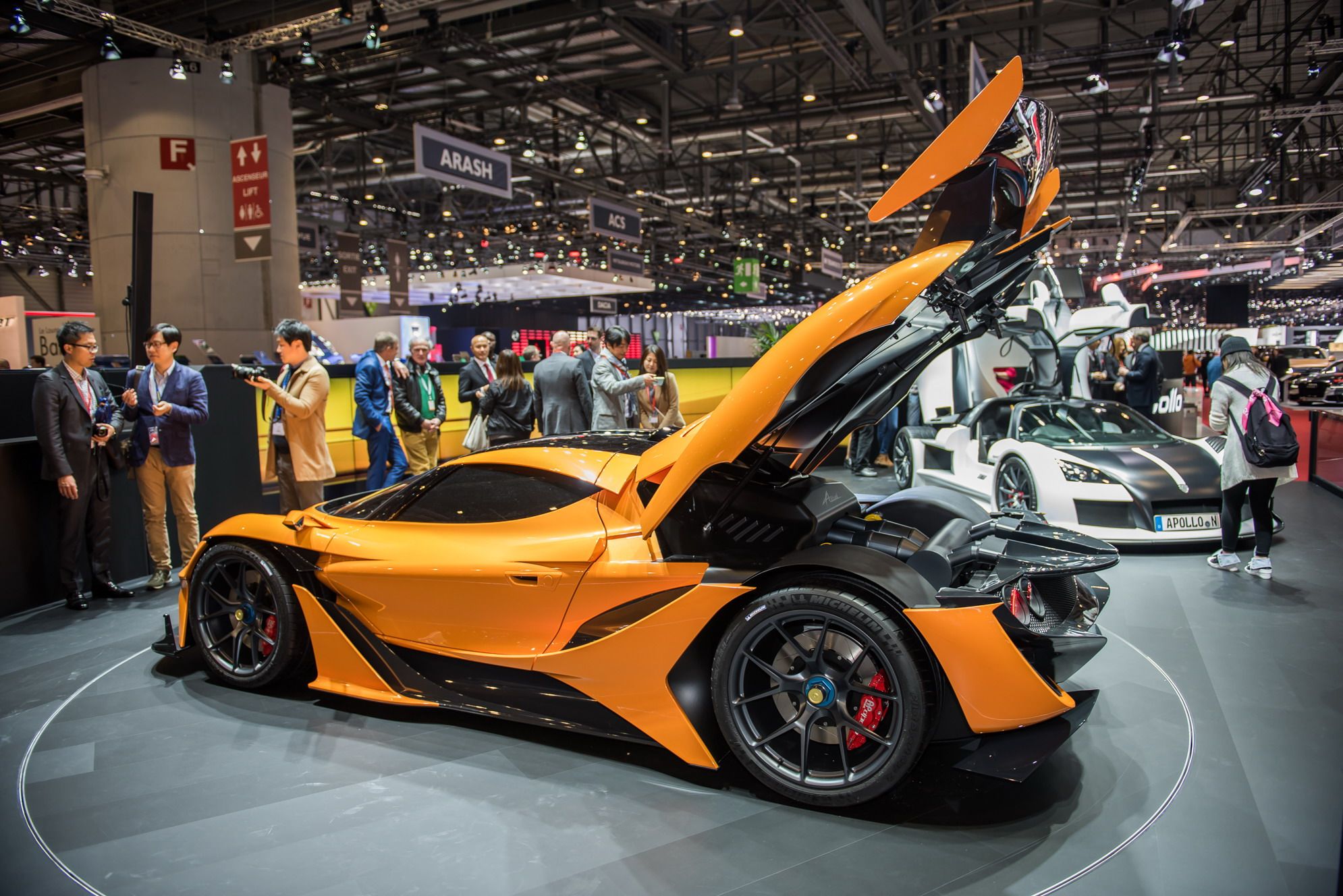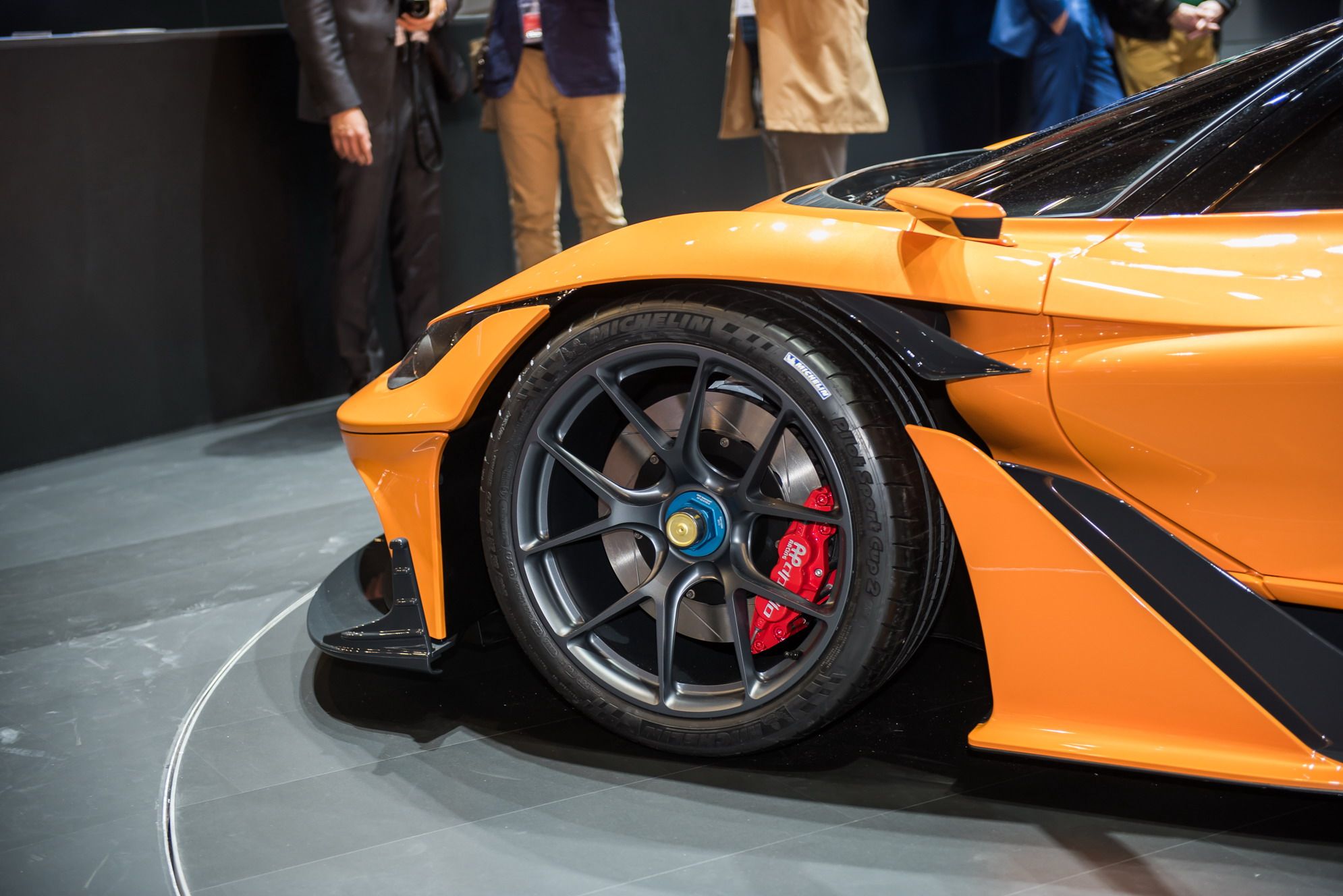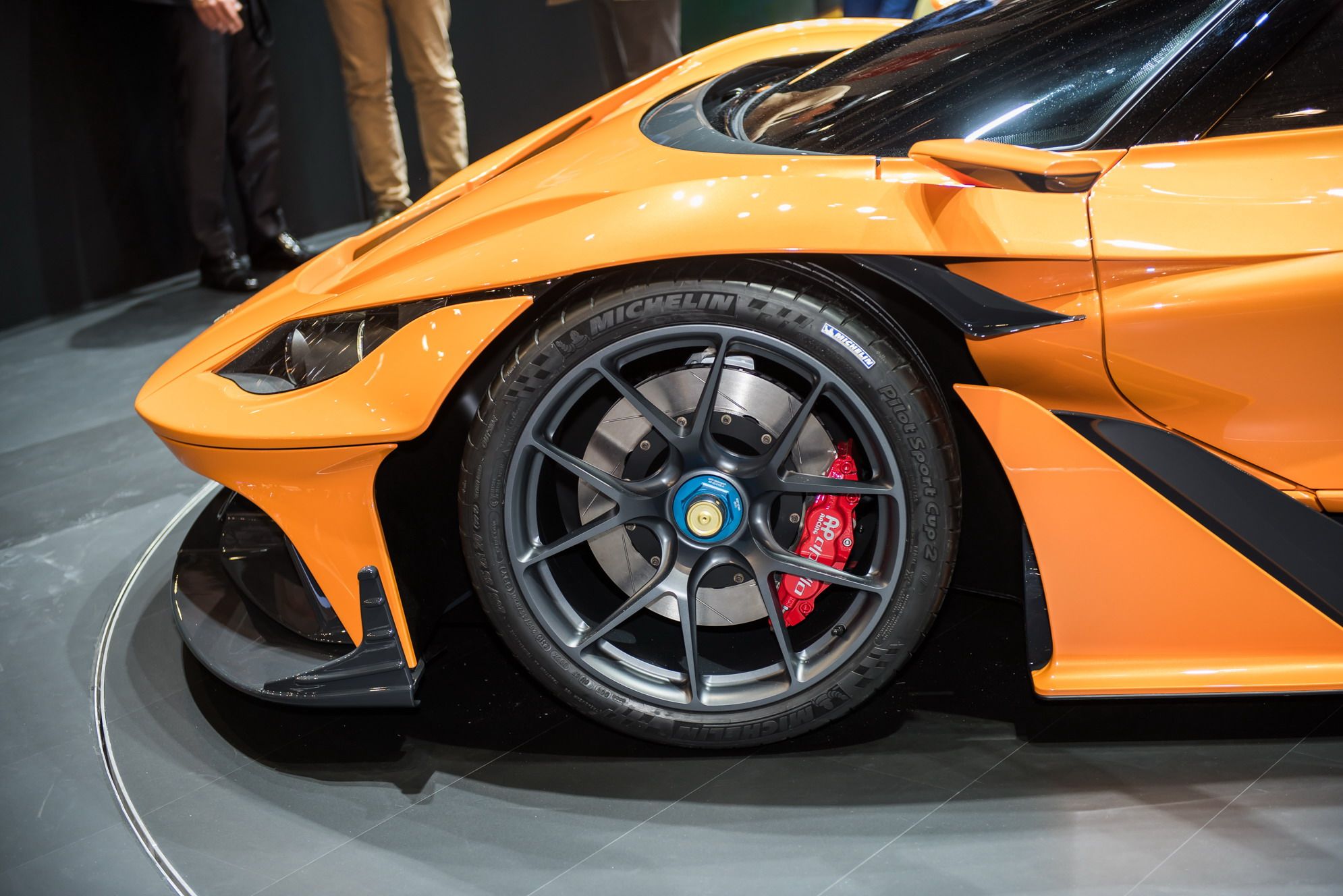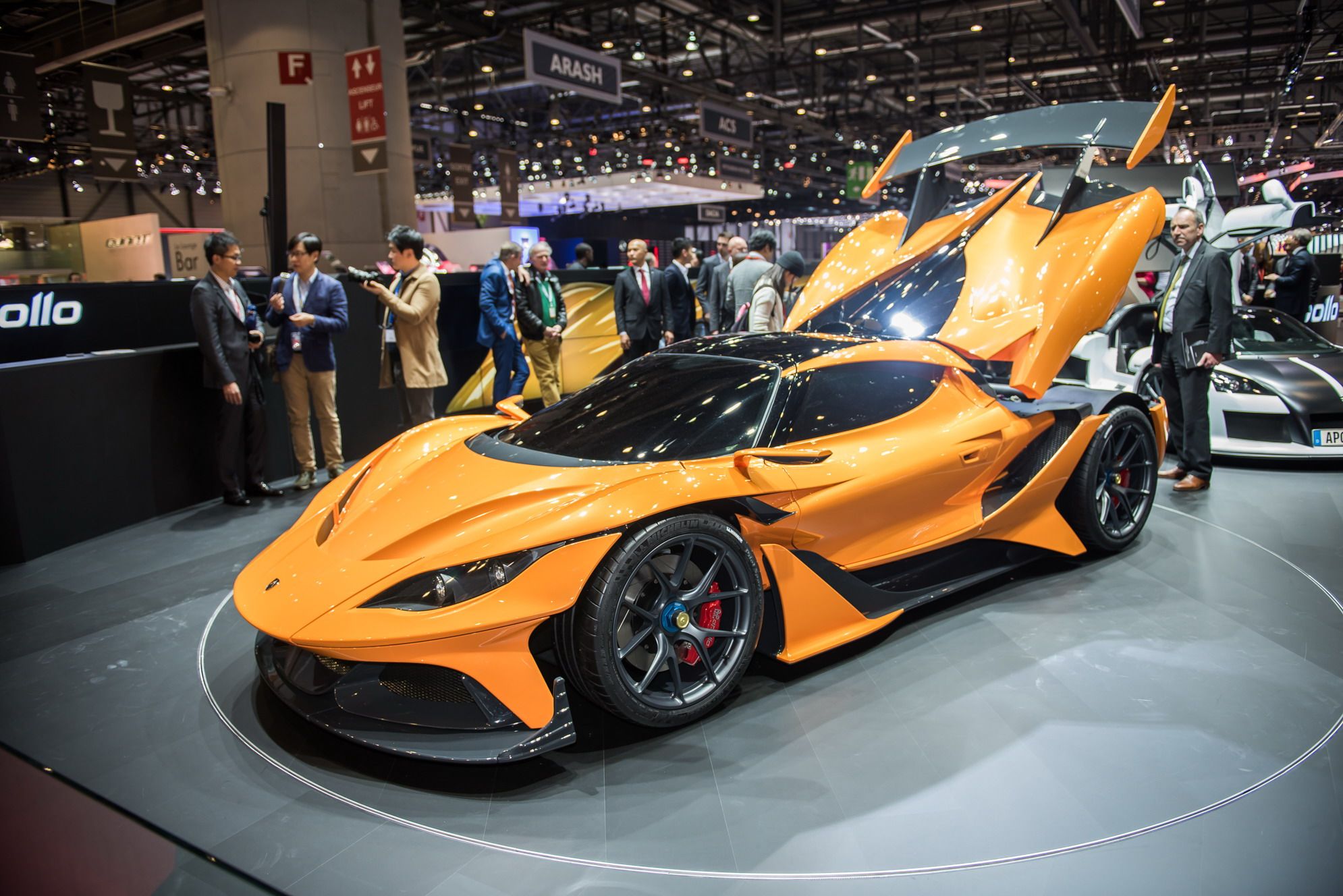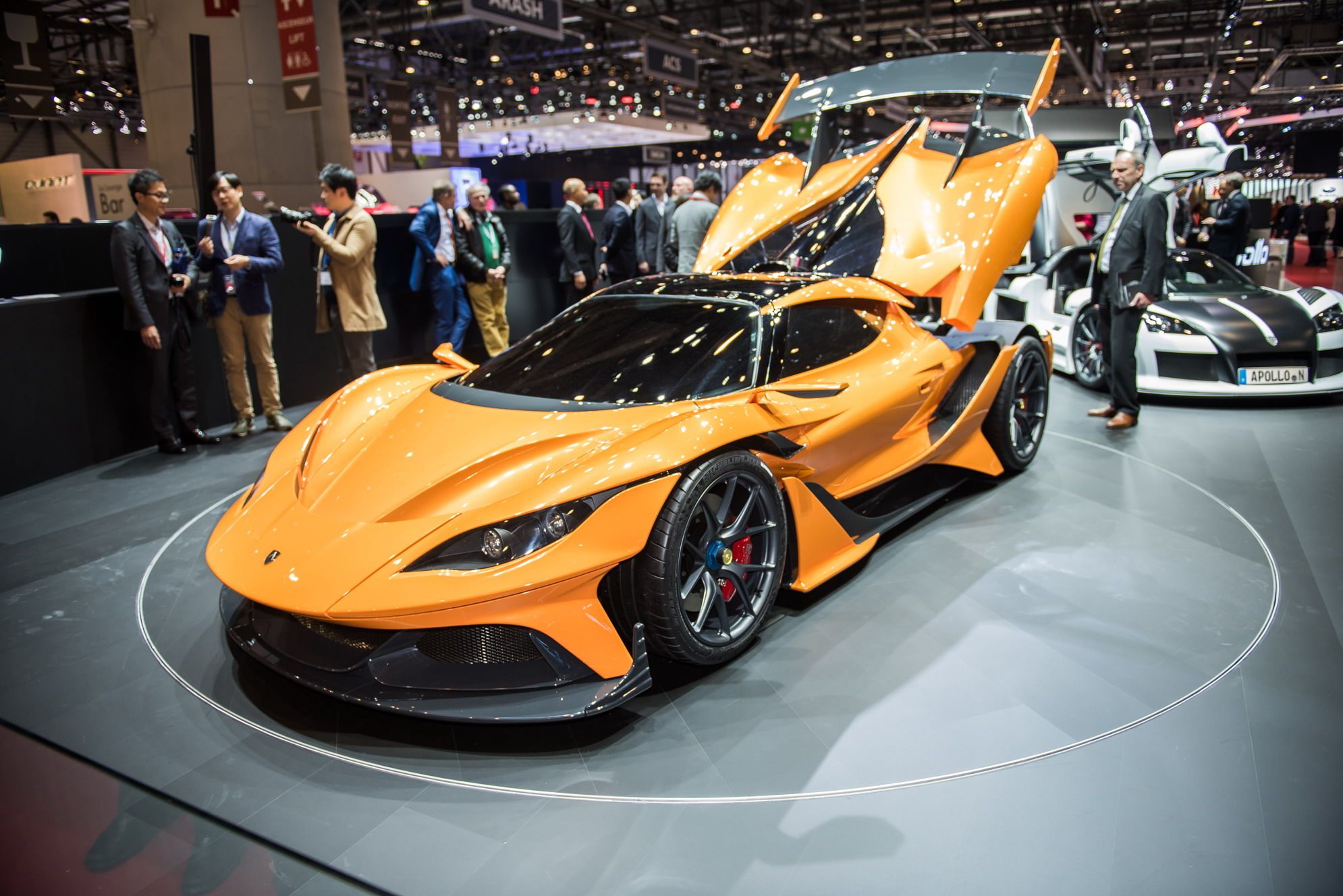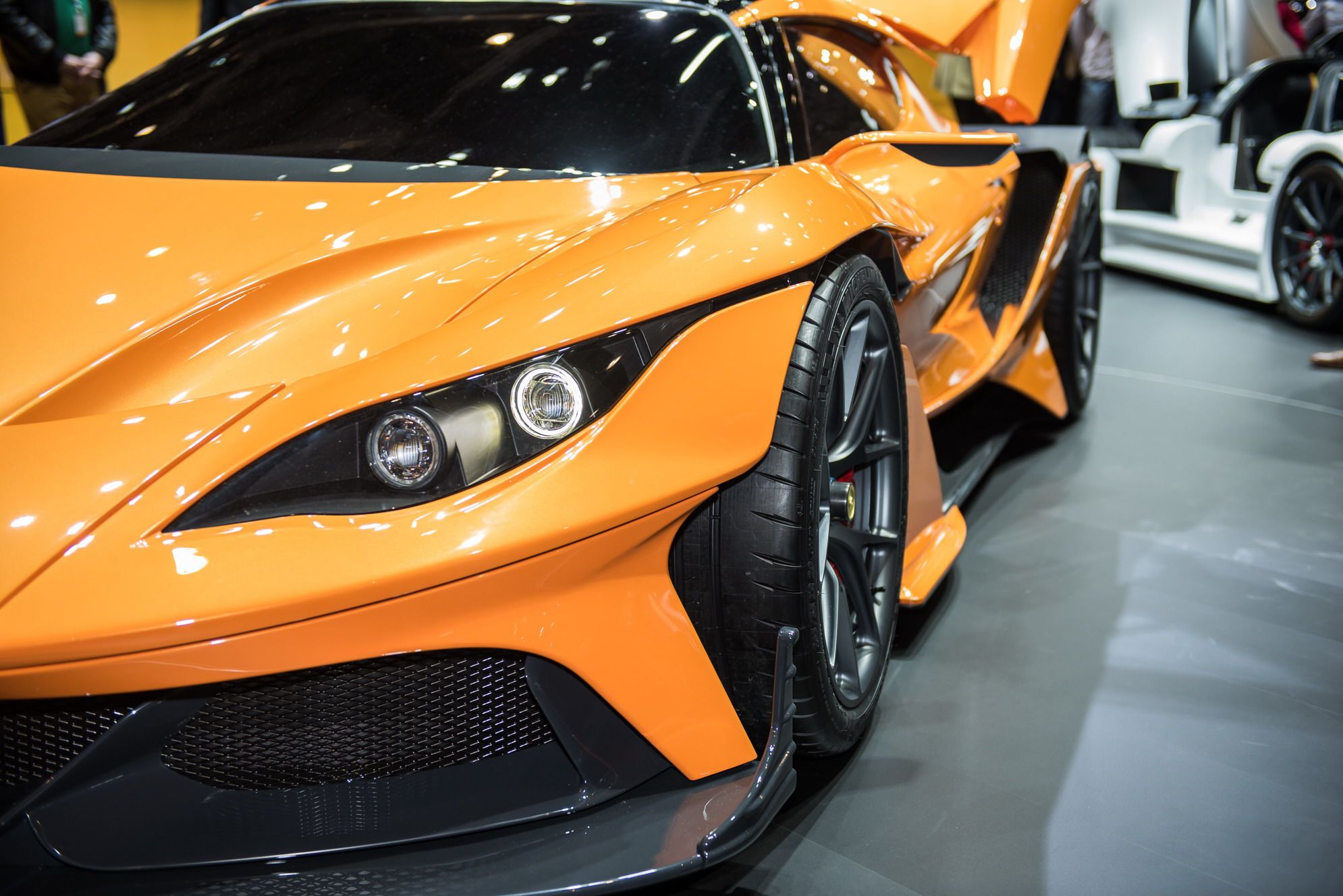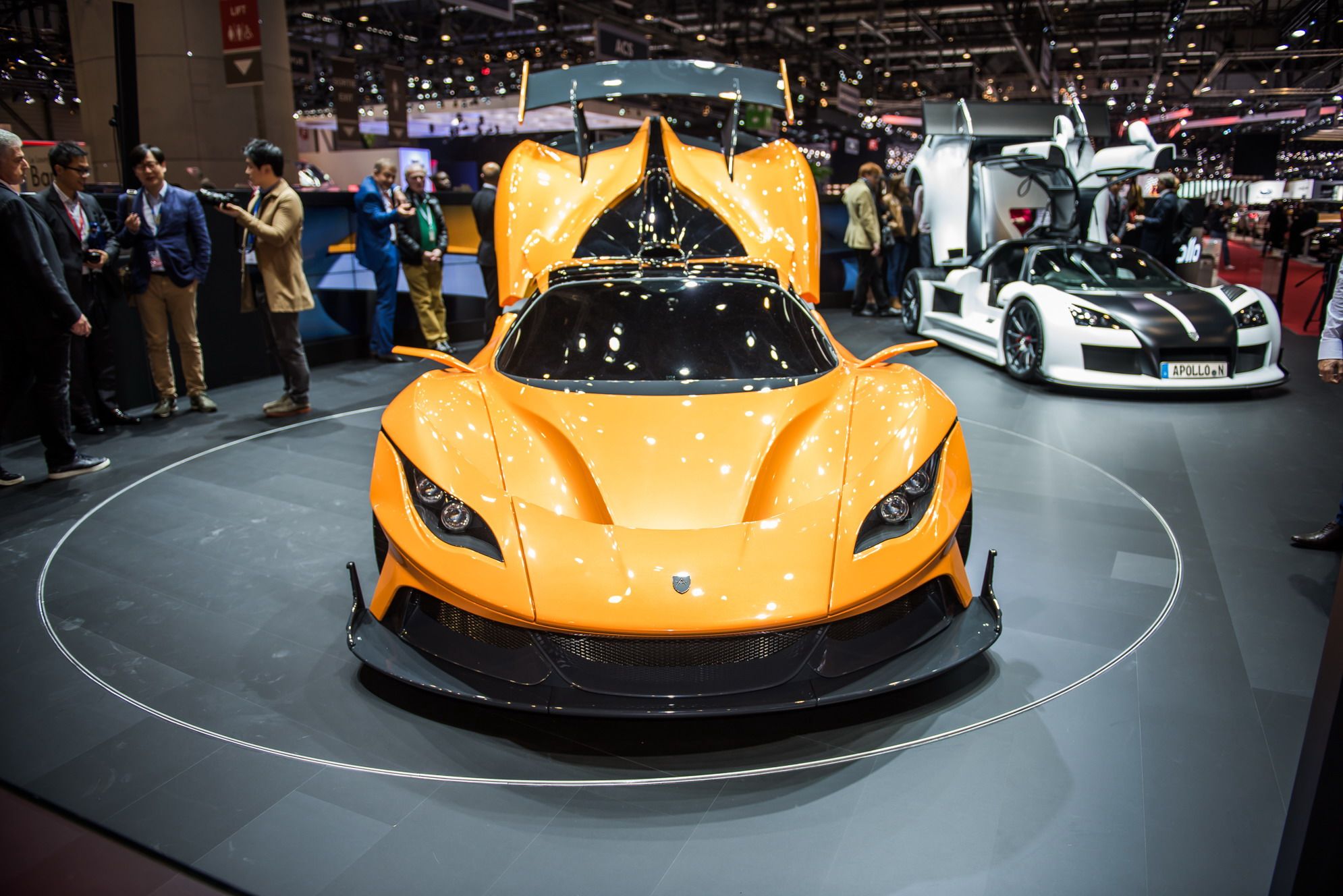The automaker once known as Gumpert Sportwagenmanufaktur GmbH->ke1055 has received a new lease on life thanks to wealthy investors at a holding company named Ideal Team Ventures Limited. What’s that matter? Well, Ideal Team has poured resources into the automaker, effectively allowing it to rebirth itself with a new product. That product debuted at the 2016 Geneva Motor Show->ke228 as the Apollo Arrow – a 1,000-horsepower hypercar->ke177 ready to compete in the exclusive league of built-to-order collectibles.
The automaker, now called Apollo Automobil GmbH,->ke5451 appears ready to redefine itself as a legitimate threat to other hypercar builders. "I have always been a big fan of the Gumpert Apollo.->ke1056 It was, in my opinion, a thoroughbred hypercar that stood out among its competitors," said Norman Choi, owner of Ideal Team Ventures Limited. "I’m excited to have the opportunity to revive, reinvent and rebuild this legendary, record-breaking vehicle.”
Though the company went through a restructuring, Roland Gumpert continues to act as Apollo’s CEO and chief engineer. "The Arrow is truly magnificent – it is the perfect combination of German engineering and automotive art," Gumpert says about the car. "Although it’s still a prototype, we are confident that the Arrow->ke5450 will achieve the unimaginable."
This marks a new chapter for Apollo, thanks to its new investor, fresh engineering practices, and as we’ll see with the Arrow, a new design style that mimics the natural world.
Continue reading to learn more about the Apollo Arrow.
2016 Apollo Arrow
- Make: Array
- Model: 2016 Apollo Arrow
- Engine/Motor: V8
- Horsepower: 989
- Torque: 737
- Transmission: Fully synchronised sequential 7-gear
- [do not use] Vehicle Model: Array
Exterior
That new design philosophy is described in Apollo’s press release like this: “People today have a highly sensitized response to design and instinctively begin to link together cues originating from a single philosophy. For our designers, the design that heralded the rebirth of Apollo is crucial – because it will have a key influence on the style of the cars that follow.”
In other words, Apollo needed to create something fresh and different – something that looked like nothing else. Apollo designers didn’t want folks linking the Arrow’s design cues to some other vehicle or with a styling theme that’s already been done. The Arrow had to break fresh ground. That’s a noble task these days, when it seems like many automakers are piece-milling vehicles together using styling cues found elsewhere. It might not be considered a copy-cat design, but the detailing has been done before.
Why the fuss? Well, Apollo plans on being around for the long haul. The Arrow will serve as a design benchmark that future designers will look back on for inspiration. The Arrow serves as the design foundation for the entire Apollo brand.
And looking at the car, it’s clear Apollo designers achieve their goal. The Arrow looks like nothing else on the road. its steeply raked front nose leads into a massive windshield and down over a sloping rear panel. Large aero pieces help the Arrow slip through the air. They include the front chin splitter, the large rear wing and diffuser, and the side mirrors that sit far removed from the body.
The mid-engine car uses a clamshell-style rear opening to cover its engine and rear suspension. Open the cover and you’ll get a beautiful view of yellow coil springs, a silver custom exhaust system, and the center differential with half-shafts heading to each rear wheel. It’s mechanical beauty at its finest.
Exterior Dimensions
|
Length |
4,890 MM (192.51 Inches) |
|
Width |
1,992 MM (78.42 Inches) (2,185 MM with mirrors (86.02 Inches)) |
|
Height |
1,224 MM (48.18 Inches) |
|
Wheelbase |
2,700 MM (106.29 Inches) |
|
Wheel gauge front/back |
1,670/1,598 MM (65.74/62.91 Inches) |
Interior
Apollo didn’t say much about the Arrow’s interior, though the automaker gives its customers nearly free reign to customize their vehicle the way they see fit. Want Alcantara? Done. Leather? Sure. Velour? It might be the ugliest thing ever seen, but yeah, Apollo would do it.
Drivetrain
Behind the cockpit and under the clamshell lies an Audi-sourced, 4.0-liter V-8 fitted with twin turbochargers. The engine uses a reverse-flow design, placing the turbos inside the vee to greatly reduce turbo lag. The total output is impressive: 986 horsepower at 6,750 rpm and 737 pound-feet of torque at 3,650 rpm. That allows the 2,900-pound Arrow to hit 62 mph in a claimed 2.9-seconds while top speed is said to be 220 mph.
Those turbos are larger than anything Apollo has used before, and therefore needed larger intercoolers. That’s where the Arrow’s exterior design came into play, utilizing the bodywork to route cool air into the engine bay. Not only do the turbos add power, the larger exhaust that accompany them are said to decrease backpressure. A welcomed side benefit is slightly improved fuel economy.
Drivetrain Specifications
|
Type |
V8 4.0l Twin-Turbo |
|
Displacement |
3,993cm3 |
|
Output |
1000 PS (986 HP) |
|
Torque |
1000 NM (737 LB-FT) |
|
Transmission |
Fully synchronised sequential 7-gear CIMA transmission, Twin plate clutch configuration, |
|
Self-locking differential by Torsen |
|
|
0 - 100 km/h (62 mph) |
2.9 seconds |
|
0 - 200 km/h (124 mph) |
8.8 seconds |
|
Top Speed |
360 KM/H (223 MPH) |
Suspension & Brakes
The Arrow uses magnetic-type dampers that continually adjust to road and track conditions. They help quell the movements of the center-locking, 20- and 21-inch wheels. The dampers also allow for an adjustable ride height, ranging from 40 mm to 120 mm. The wheels cover a performance braking system from AP Racing with the EPS and ABS programmed from Bosch. Brake cooling has also increased over anything done by Apollo, keeping brake fade subdued.
Prices
Apollo hasn’t worked out finial pricing, though the Arrow won’t cost more than €1 million, or roughly $1,100,000 at current exchange rates. That makes the Arrow one of the lest-expensive hypercars on the market. Of course, the more customization and bespoke parts that a customer adds, the more the price rises. Apollo has set a production limit of 100 examples, so if you want your own, you’d better act quickly.
Competition
McLaren P1
The McLaren P1 is a surprisingly well-matched competitor to the Apollo Arrow. Only 0.2-liters separate the P1’s 3.8-liter V-8 from the Arrow’s. The P1 even uses a pair of turbochargers to achieve its 800-horsepower rating. Unlike the Arrow, the P1 uses a hybrid electric drive system that generates 103 horsepower and 500 pound-feet of torque. That puts the P1’s output ratings at 903 and 1,100 respectively. The sprint to 62 mph only takes 2.8 seconds and its top speed is governed at 217 mph. Even the price is similar. Each of the 375 examples of the P1 sold for roughly $1.15 million.
Read our full review on the McLaren P1 here.
Conclusion
The Apollo Arrow certainly seems worthy of succeeding the original Gumpert Apollo car. Its more powerful engine, better sorted suspension, carbon fiber body, and bespoke looks make it what hypercars should be. Furthermore, Apollo’s customization program and production cap of 100 examples means no two cars will be the same. We expect to see everything from mild to wild with customers’ orders. After all, folks who can pay millions for a car generally get what they want.

